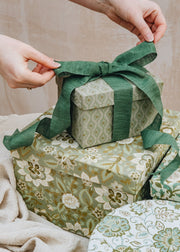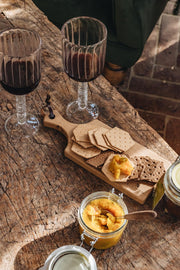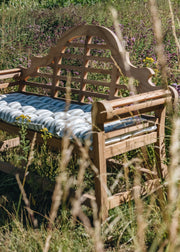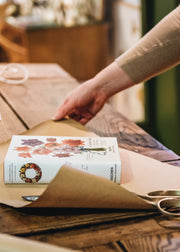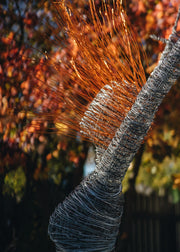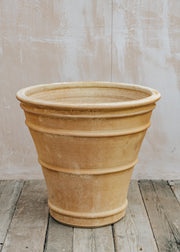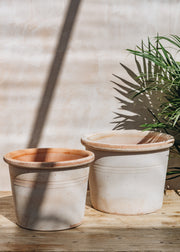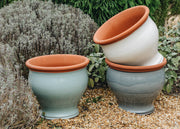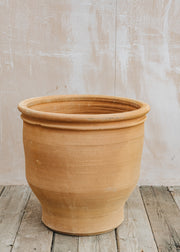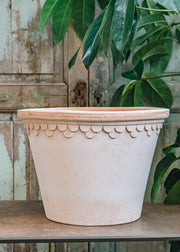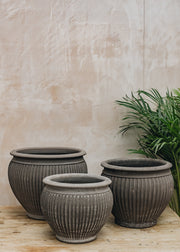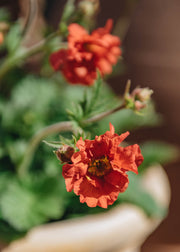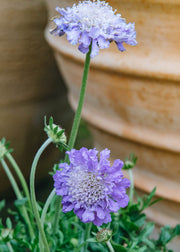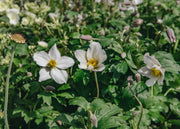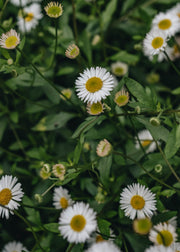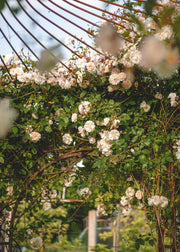How to: Plant a Late-Spring Container
A beautiful pot bursting with colour and texture brings charm and interest to any outdoor space. Whether it sits as a statement on the terrace, is used to frame a doorway, or is created as a living gift for a loved one, a well planted container breathes life into any corner.


In our garden department we regularly plant pots with colourful seasonal highlights for you to take away, but if you’d like to plant one yourself at home, here are some fundamentals to keep in mind.
- Large pot. We chose a terracotta Monahou Cretan Pot 50cm x 55cm
- 2 bags of compost (you may not use all of the second bag)
- Broken crocks
Look at the pot shape and size. Is this pot going to sit on the floor or act as a table centrepiece? This will dictate the design. Small and shallow pots will dry out much faster than larger ones.
Top of the pots
Will you be placing this pot in a sunny or shady location? Don’t mix plants with differing requirements.
- Use broken crocks to filter your drainage holes. Fill your pot 2/3 full of compost – don't use garden soil as it will be heavy and won’t drain as well.
- With plants, stick to two or three colourways or shades of colour. Think about adding foliage plants to balance the flowering plants, and always consider textures of flowers and leaves. Also, many herbs have wonderful, aromatic foliage and can act as a foil to more striking specimens.
- Plant the specimens with the tallest plant at the back, then medium sized plants with smaller plants at the front. If it is for a table centrepiece, use a centrepiece plant and work around it.
- Don’t be tempted to put too many plants in a pot, remember that these are living organisms and will fill out and spread.
- Top up with compost and trim off any damaged flowers. Water well.

Using crocks at the base of the pot

For our pot, here we have used one bright Geum Fiery Tempest plant as our showstopper, supported by two Anemone Wild Swan, two Scabious Butterfly Blue, one Phalaris arundinacea picta to provide interesting foliage with one Parahebe Avalanche. Two small Erigeron were also used to fill in gaps, with two red Calibrachoa annuals in a similar red colour to the Geums used to pull the display together.

Make it at home
Maintaining the pot should be easy but cannot be ignored. You may decide to use annuals for bright colour, which will delight and then fade, needing to be replaced each season or you may prefer a perennial display that will come back. You can also use an annual to add a pop of colour as a filler in a perennial arrangement, as we have here. Remember to keep up feed levels throughout the season, and dead-head spent blooms to promote more flowers.
